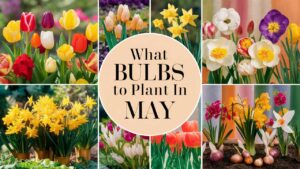When creating a captivating front yard landscape in Zone 8, selecting the right evergreen plants can set the tone for year-round beauty. Each of the following species has unique visual aesthetics, practical benefits, and adaptability that can enhance your front yard landscape.
Arborvitae
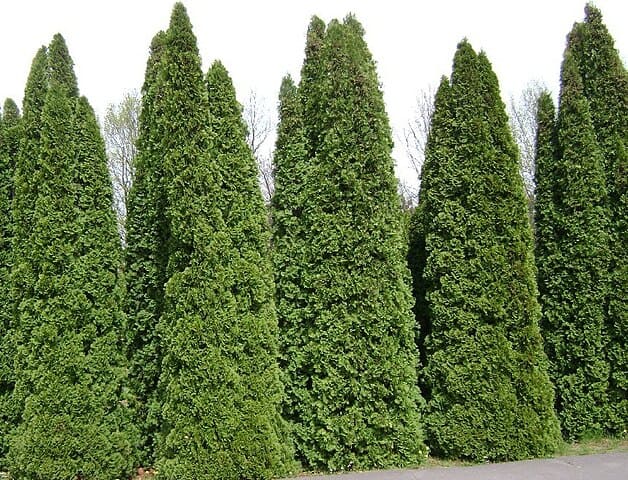
Arborvitae (Thuja spp.) are a staple in many landscapes for good reason. Known for their tall, narrow form, these evergreens are ideal for adding verticality to your front yard. Varieties like ‘Green Giant’ and ‘Emerald Green’ boast dense foliage that provides year-round privacy, making them perfect for creating natural screens or hedges.
In Zone 8, Arborvitae thrives in both full sun and partial shade, making it versatile for various garden layouts. Their lush green foliage serves as a beautiful backdrop when paired with flowering plants and shrubs. Furthermore, they are relatively low maintenance, requiring only minimal pruning to maintain shape. These resilient plants can tolerate drought conditions once established, making them a sustainable choice for eco-friendly gardening.
Beyond their aesthetic value, Arborvitae are also a boon for local wildlife. The dense foliage provides nesting sites and cover for birds, while the aromatic leaves may deter pests in your garden. With a bit of thoughtful placement and care, Arborvitae can become the cornerstone of your evergreen landscape, providing structure, habitat, and seasonal interest.
Junipers
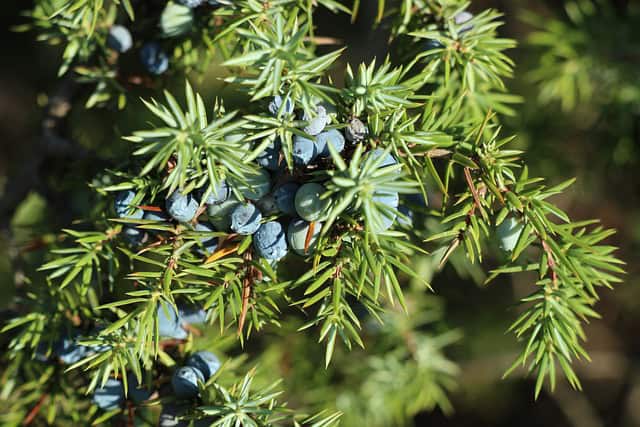
Junipers (Juniperus spp.) are incredibly diverse evergreen plants that come in numerous shapes, sizes, and colors, making them a versatile selection for any garden design. Whether as ground covers, shrubs, or small trees, Junipers add texture and visual intrigue to your front yard. Varieties such as ‘Blue Star’ and ‘Sea Green’ not only exhibit attractive foliage but also create dynamic contrasts when planted alongside other evergreens and flowering plants.
One of the extraordinary features of Junipers is their adaptability to various soil types and conditions, thriving in well-drained, sandy soils typical of Zone 8. Their drought resistance and ability to flourish in full sun make them an excellent choice for low-maintenance landscapes. When incorporated as ground cover, Junipers can help suppress weeds while providing a lush green carpet that beautifies your front lawn.
Additionally, many Juniper species produce small berry-like cones that provide sustenance for local wildlife, enhancing biodiversity in your garden. In landscaping, these evergreens can form attractive borders, cascading over rocks, or serving as focal points. Elevate your front yard by interspersing Junipers among boulders or using them to flank walkways, creating a welcoming and structured environment.
American Holly

American Holly (Ilex opaca) is not just an iconic symbol of holiday cheer; it is also an invaluable addition to an evergreen front yard in Zone 8. With its distinctive spiky leaves and vibrant red berries, Holly brings a unique visual dimension and seasonal interest that few other evergreens can match. Beyond decoration, it serves multiple functional purposes in garden design.
This moderate-growing tree can reach heights of 15 to 30 feet, making it suitable for creating an impressive focal point in your landscape. To achieve a balance of form and function, plant Hollies strategically to ensure they are spaced apart adequately, allowing for their natural shape to flourish. One of the remarkable traits of American Holly is its resilience; it thrives in a range of soil types and lighting conditions, from full sun to partial shade.
American Holly is also sought after for its ecological contributions. The berries attract birds and other wildlife, as they offer a nutritious food source during winter when other resources may be scarce. The dense foliage provides shelter, creating a lively ecosystem around your front yard. By choosing American Holly, you not only enhance your landscape’s visual appeal but also promote sustainability and biodiversity, allowing your garden to flourish in harmony with nature.
Cypress
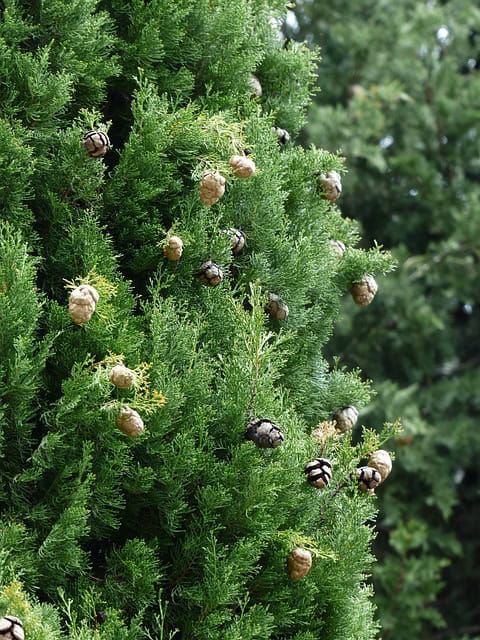
Cypress trees (Cupressus spp.) are celebrated for their majestic stature and graceful forms. Known for their ability to thrive in wet and dry conditions, cypress varieties such as the Bald Cypress (Taxodium distichum) can be perfect for Zone 8 gardens, where they provide a dramatic touch with their towering height and feathery foliage. Their adaptability to diverse soil types—especially clay and acidic soils—gives them an edge in various landscape settings.
Bald Cypress, in particular, features a unique trait: its ability to develop “knees,” which are woody projections that rise above the ground in wetland areas. This gives the tree a distinctive silhouette, adding visual interest to your front yard. Beyond aesthetics, cypress trees are relatively low-maintenance once established; they do not require frequent watering, making them environmentally friendly choices for sustainable landscaping.
Ecological benefits abound when you incorporate cypress into your landscape. Its dense canopy offers shelter and nesting sites for birds, while the tree’s seeds can be a food source for various wildlife. Planting cypress near water features not only enhances the natural beauty of your yard but also helps in soil stabilization, reducing erosion around ponds and streams. Your front yard can transform into a serene retreat with the addition of these stately trees, marrying elegance with ecological stewardship.
California Laurel (Umbellularia californica)
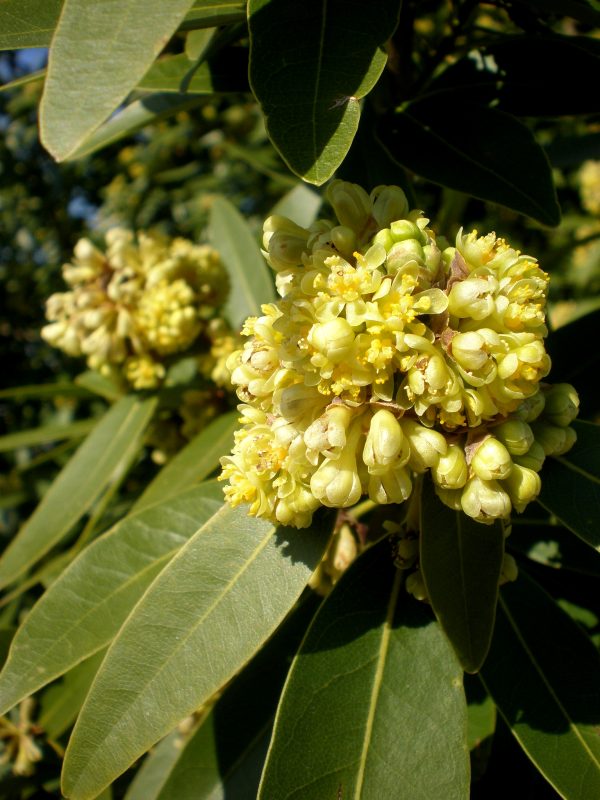
California Laurel, also known as Bay Laurel, is an evergreen that marries beauty with functionality in any Zone 8 front yard. This tree is prized for its glossy, aromatic leaves that can be used as culinary herbs, enhancing the landscape’s utility while captivating the senses. California Laurel can grow to heights of up to 60 feet, providing a striking vertical element that’s perfect for creating a dramatic focal point.
This evergreen thrives in various soil types and can adapt to full sun or partial shade, offering versatility in planting locations. Its dense, rounded canopy creates a lush, green environment that can comfortably screen out unwanted views, making it an excellent choice for privacy without sacrificing beauty. Moreover, the bark of California Laurel has a distinctive reddish-brown color, which adds texture and interest to the landscape throughout the seasons.
An excellent choice for wildlife enthusiasts, California Laurel attracts beneficial pollinators such as bees and butterflies with its small, inconspicuous flowers. These trees also provide a habitat for birds and small mammals. When planted strategically, California Laurels can frame entrances, love-seat areas in the landscape, or even create informal hedgerows. This tree’s multipurpose qualities make it a fantastic addition to your evergreen front yard, presenting both aesthetic delight and practical benefits.
Longleaf Pine (Pinus palustris)
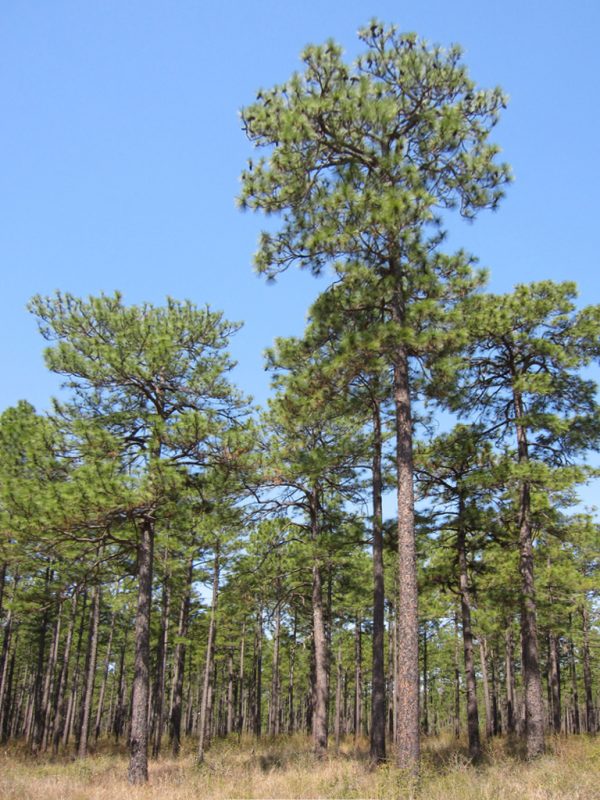
Longleaf Pine is a truly iconic evergreen species that has much to add to a front yard landscape in Zone 8. Known for its long needles (which can grow up to 18 inches) and distinctively attractive structure, this tree can reach heights of over 100 feet, making it a commanding presence in any garden. Longleaf Pines are native to the southeastern United States, adapting well to the sandy soils characteristic of the region, which makes them particularly well-suited for many landscapes in Zone 8.
One of the standout features of the Longleaf Pine is its remarkable resilience and longevity; these trees can live for several centuries. Incorporating them into your landscape not only provides a stunning visual element but also contributes to a sense of history and permanence. The Longleaf Pine’s unique growth pattern, characterized by an initial “grass stage,” allows it to endure competition from other plants before soaring into its mature form.
Beyond aesthetics, Longleaf Pines play a significant role in supporting local ecosystems. Their needles create a blanket on the forest floor, which helps suppress weeds and retain moisture, promoting a healthier soil environment. These trees are also crucial to the habitat of many birds, mammals, and ground-dwelling species. As an ecological powerhouse, planting Longleaf Pine brings an inspiring blend of natural beauty and environmental sustainability to your front yard, ensuring a thriving landscape for generations to come.
Southern Magnolia (Magnolia grandiflora)
The Southern Magnolia is often considered the quintessential Southern tree, renowned for its stunning large, white flowers and glossy, evergreen leaves. This majestic tree can grow between 60 to 80 feet tall and 30 to 50 feet wide, making it an exceptional choice for creating a focal point in your front yard. The remarkable blooms, which can reach up to a foot in diameter, typically appear from late spring to early summer, filling the air with their sweet fragrance—a beautiful companion to warmer months.
Southern Magnolias are well-adapted to the humid conditions typical of Zone 8, thriving in rich, moist, well-drained soils. While they prefer sunny spots, they are quite tolerant of partial shade, offering versatility in garden design. One of the tree’s significant characteristics is its adaptability to urban environments, often tolerating air pollution and soil compaction better than many other species.
Beyond their aesthetic appeal, Southern Magnolias have ecological significance. The thick foliage provides essential shelter for birds, while the tree’s large seeds attract a variety of wildlife, including squirrels and insects. When planted strategically, Magnolias can create an elegant canopy that provides shade to other garden elements, making them not only a standout feature but also a practical addition to your landscape.
Wax Myrtle (Myrica cerifera)
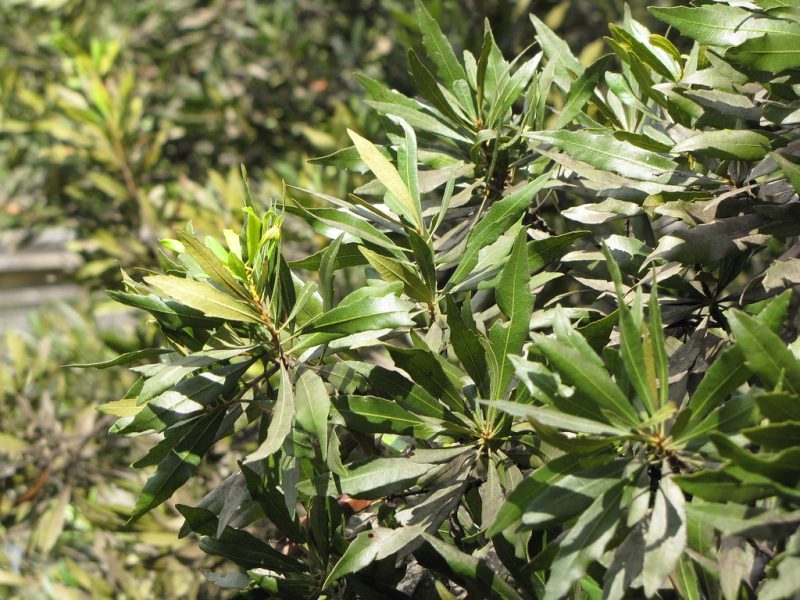
Wax Myrtle is a versatile and resilient evergreen shrub that deserves a prominent place in your Zone 8 front yard landscape. Reaching heights of 10 to 15 feet, this shrub is not only visually pleasing with its dense, aromatic foliage, but it also offers a degree of flexibility in garden design. Its narrow, lance-shaped leaves emit a pleasant scent when crushed, adding sensory appeal to your outdoor space.
One of the significant advantages of Wax Myrtle is its tolerance to various soil and light conditions. It thrives in full sun to partial shade and can adapt to wet or dry soils, making it an ideal choice for areas that experience fluctuations in moisture. In addition to being hardy, Wax Myrtle is low-maintenance, requiring minimal pruning and care once established.
Ecologically, Wax Myrtle plays an essential role in supporting local wildlife. The small blue-grey berries it produces are a food source for many birds and small mammals, enhancing biodiversity in your garden. Additionally, the plant has a unique ability to repel pests, making it an excellent choice for creating natural boundaries in your landscape. Incorporating Wax Myrtle into your front yard not only contributes to the visual richness but also promotes a healthier ecosystem.
Portuguese Laurel (Prunus lusitanica)
For those looking to add an elegant touch to their front yard, Portuguese Laurel is a stellar evergreen choice. Known for its dark green leaves that can be glossy or slightly wavy, this shrub or small tree typically grows 15 to 30 feet tall, making it perfect for borders, hedges, or standalone specimens. Its dense growth habit allows it to effectively create privacy screens and windbreaks without feeling obtrusive.
Portuguese Laurel adapts well to a variety of soil conditions, including clay, sand, and loamy soils. It thrives in full sun to partial shade, providing flexibility in placement within your landscape. This tree is relatively easy to maintain and responds well to pruning, allowing you to shape it to fit your desired aesthetic.
Additionally, Portuguese Laurel adds ecological value to your front yard. Its flowers, although subtle in appearance, attract pollinators such as bees and butterflies, fostering a thriving habitat in your landscape. Moreover, the berries produced by this tree provide sustenance for various birds and other wildlife, creating a dynamic and integrated ecosystem around your home.
Euonymus (Euonymus japonicus)
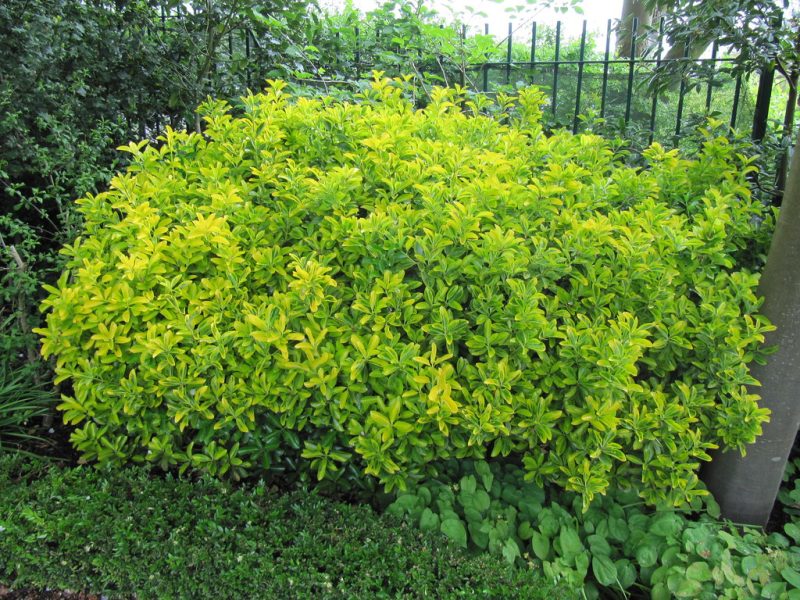
Euonymus japonicus, commonly known as Japanese Euonymus, is a popular evergreen shrub that adds a touch of year-round greenery to any front yard. This adaptable plant can vary in size, typically reaching heights of 3 to 10 feet, making it suitable for hedges, foundation plantings, or even as a small-scale privacy screen. Its thick, glossy leaves come in a variety of colors—including dark green, variegated green and yellow, and even some shades of burgundy—providing multiple options for creative landscape designs.
One of the standout features of Euonymus is its exceptional hardiness. It can thrive in a range of soil types, including clay, loam, and sandy conditions. This shrub prefers full sun but can tolerate partial shade, making it an ideal selection for various garden locations. Once established, Euonymus requires minimal maintenance, allowing gardeners to enjoy its beauty without the hassle of frequent care.
In addition to its ornamental value, Euonymus plays a role in supporting local wildlife. While it may not be a primary food source, its dense foliage can provide shelter for birds and beneficial insects. With its versatility and durability, Euonymus japonicus is perfect for enhancing structural elements in your front yard, whether used as a neat hedge or a casual grouping of shrubs that soften the edges of patios and walkways.
Queen Palm (Syagrus romanzoffiana)
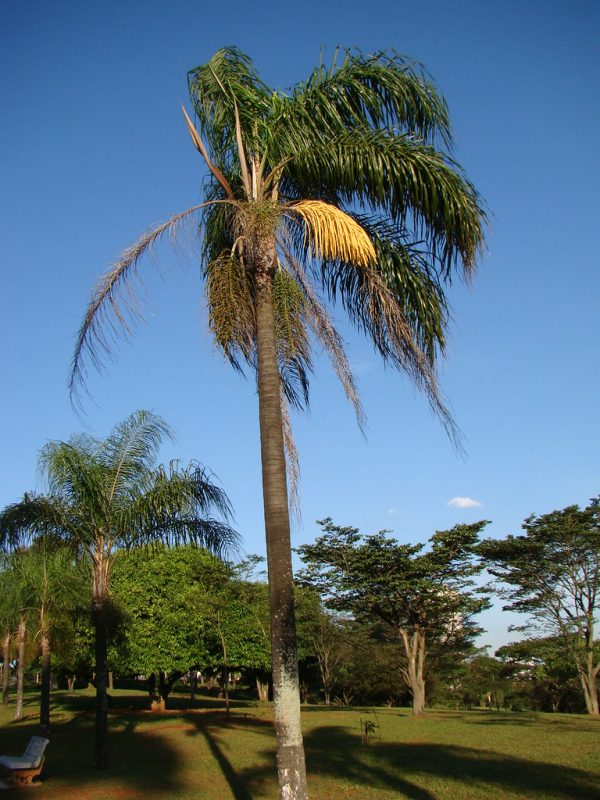
The Queen Palm is a stunning evergreen palm tree that adds a tropical flair to front yard landscapes, making it a striking choice for those looking to create a more exotic atmosphere. Reaching heights of up to 50 feet, the Queen Palm features a sleek trunk with a graceful crown of arching fronds that can spread up to 25 feet wide. Its elegant appearance can become a centerpiece in your garden, drawing the eye and creating a sense of grandeur.
Just abble to survive in Zone 8, Queen Palms thrive in full sun and prefer well-drained soil, making them a splendid option for sunny spots in your front yard. While they are somewhat drought-tolerant once established, regular watering during dry spells can help these palms flourish and ensure they maintain their lush appearance. The striking contrast between the green fronds and the light-colored trunk can create an inviting atmosphere, particularly when paired with colorful flowering plants or other tropical species.
Beyond their visual appeal, Queen Palms also provide practical benefits for homeowners. The fronds create dappled shade, offering cool relief in outdoor spaces without completely blocking out sunlight. Additionally, these palms produce small clusters of white flowers that eventually give way to attractive orange fruits, which add seasonal interest and can attract birds to your garden.







